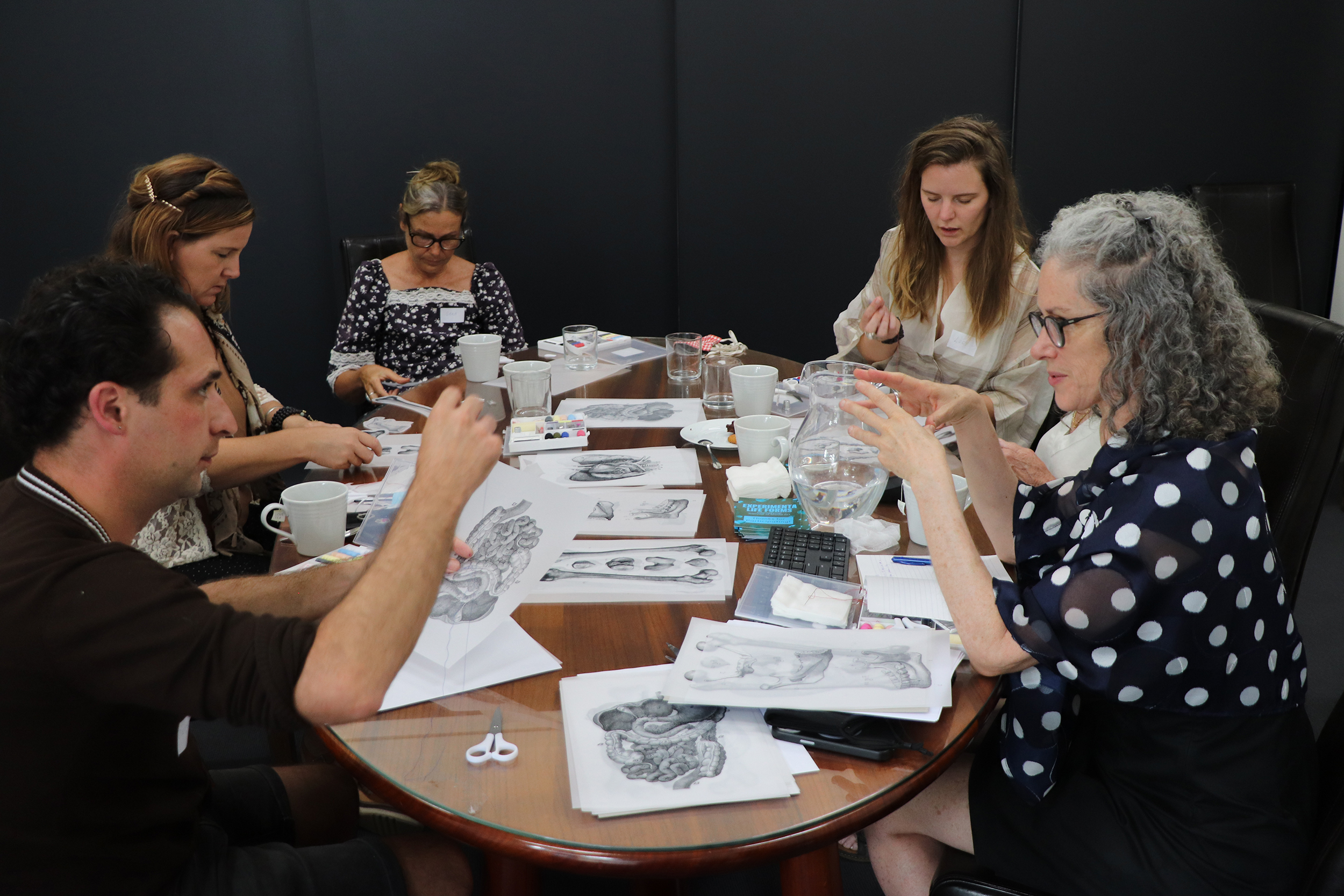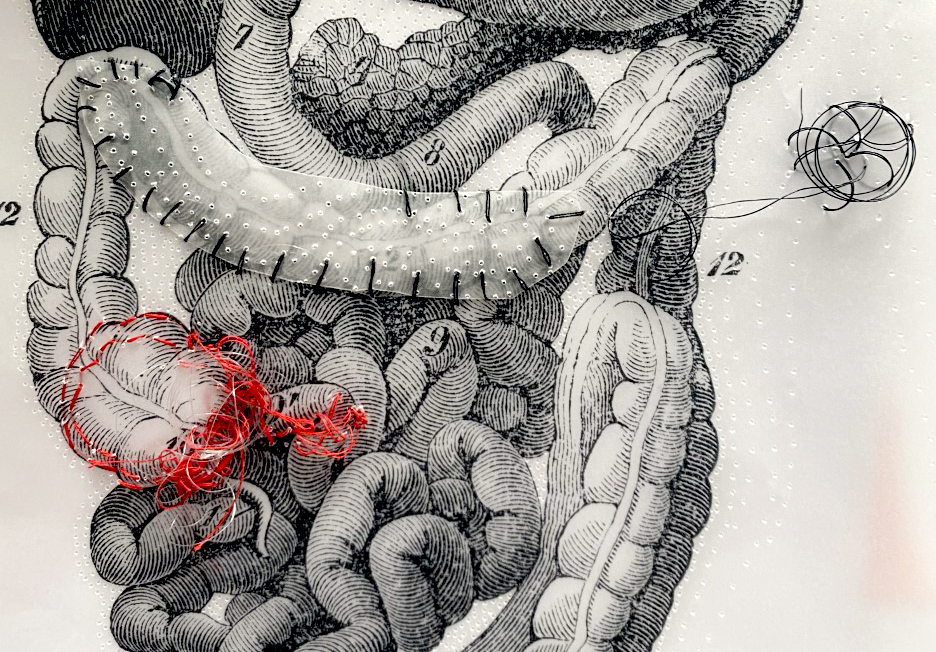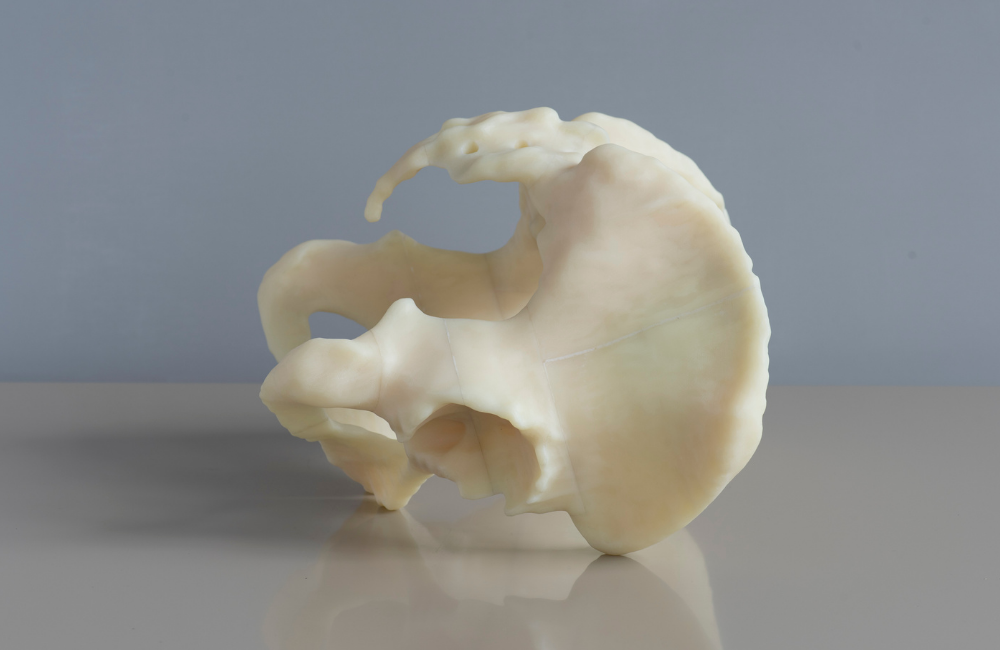Helen Pynor
Habitation
Sydney, NSW, Australia
About
This installation explores how animate-inanimate boundaries are collapsing due to the widespread use of medical prosthetics, and was prompted by hip replacement surgery Pynor recently undertook. The artwork takes up Monika Bakke’s notion of ‘lithic intimacies’: life’s diverse and intimate relationships of exchange, and inter-species companionship with minerals. Navigating medical prohibitions, Pynor retained the bone material removed from her body during surgery, raising important questions about ownership and personal agency over ‘life forms’ excised from the body. To honour her excised bone, she has used it to make a bone china femur head, which sits alongside earthenware pelvis and femur bones, the bones that remain in her body. Bone forms have been modelled from CT scan data of her pelvis and femur bones prior to surgery. Coral-shaped forms are attached to the sites where her prosthesis is embedded in her bones. The material exchange taking place in coral between soft-bodied organisms and their calciferous structures, offers an analogy to the osteo-integration of human bone cells into the mineral structure of prostheses. The lightbox images displayed on the gallery wall, drawn from her archive of CT and X-ray scans, evokes her transformation through surgery. This artwork seeks to challenge perceptions of the body as a passive recipient of human engineered implants.
Grateful thanks to Dr Michael O’Sullivan, Zoe Hart, Jan Guy, Bec Dean, Canbora Bayraktar
This project has been assisted by the Australian Government through the Australia Council for the Arts, its arts funding and advisory body; Sydney College of the Arts, The University of Sydney; and Corin Group. Capacity has been supported by the City of Joondalup, Western Australia.

The Artist
Helen Pynor
Dr Helen Pynor is an Artist and Researcher whose practice explores philosophically and experientially ambiguous zones, such as the life-death boundary.






